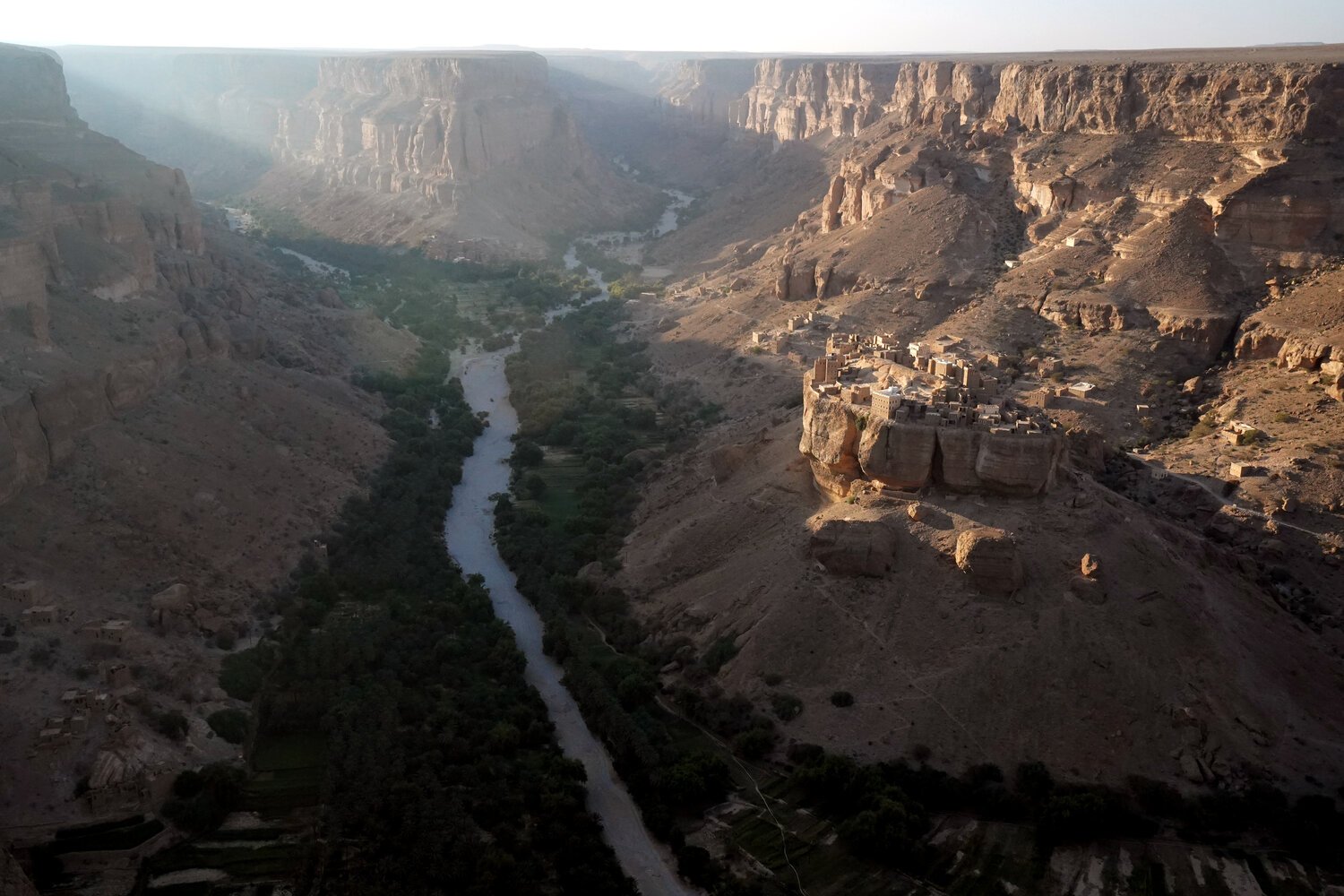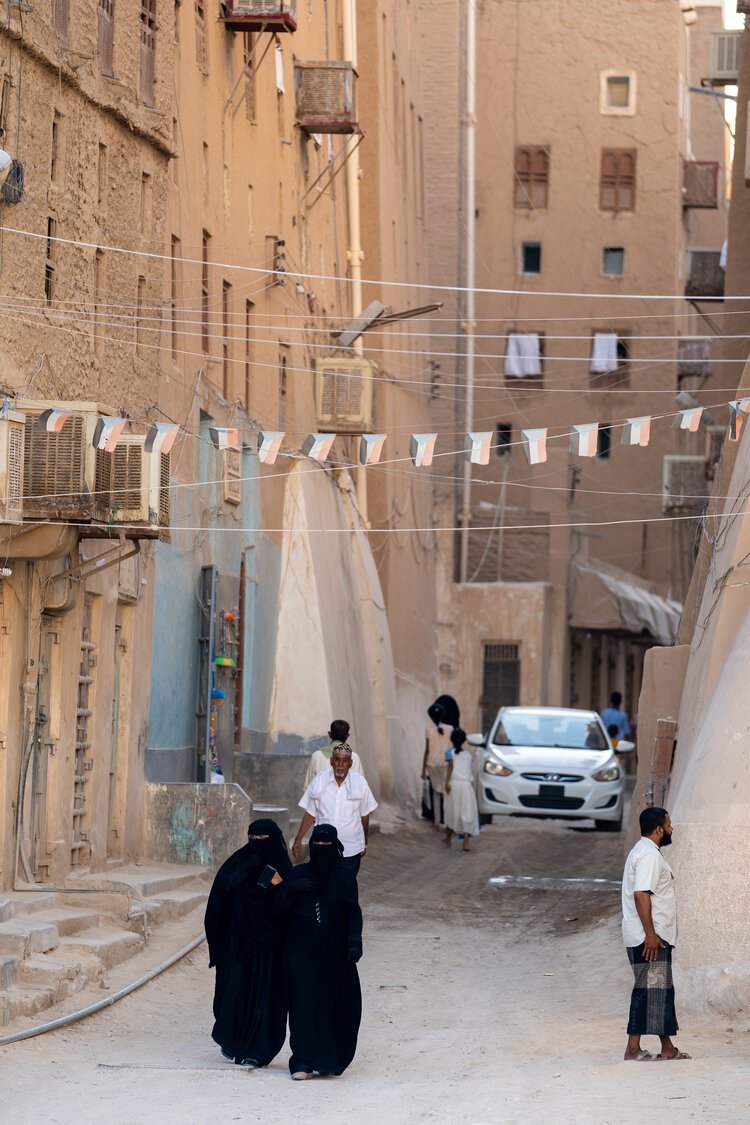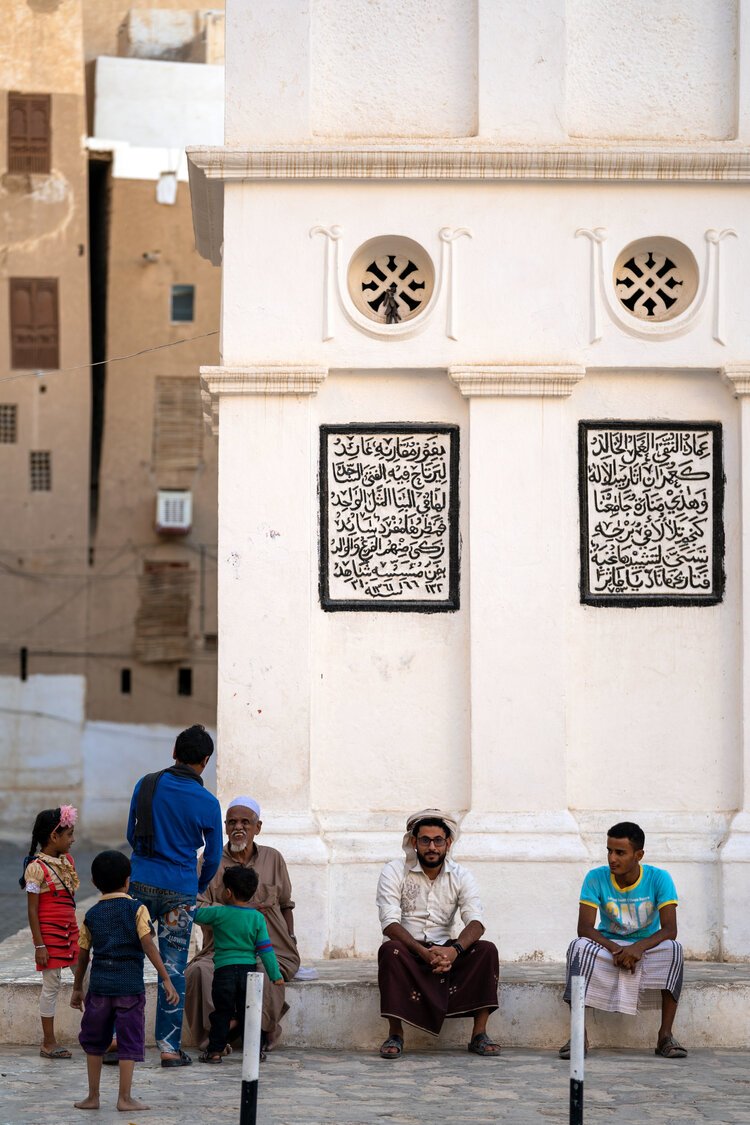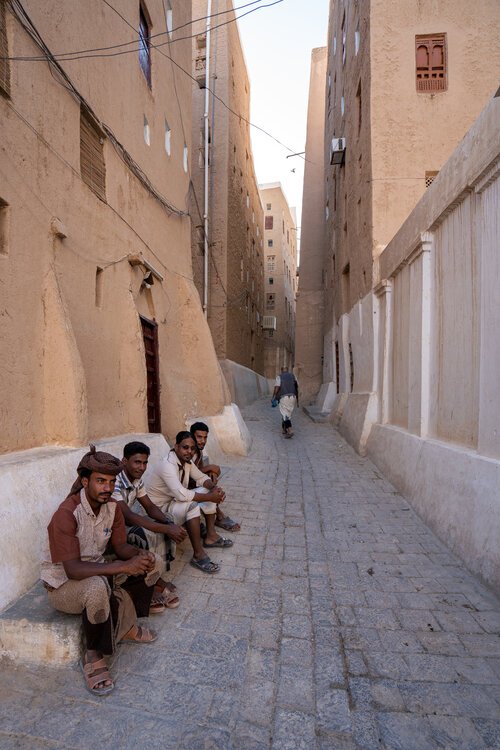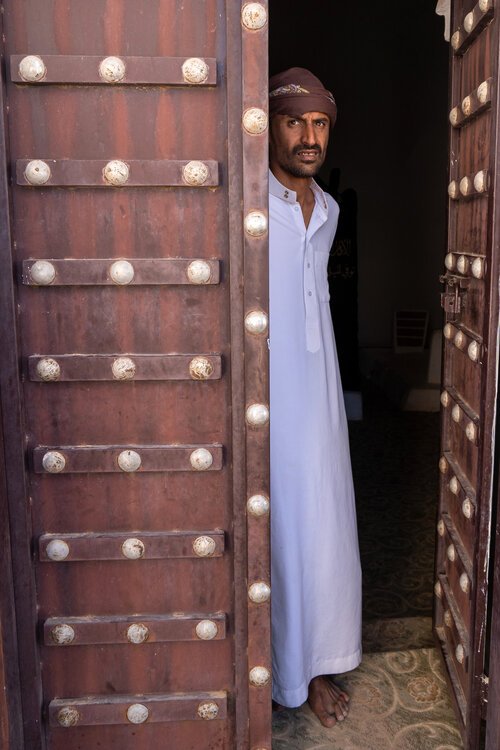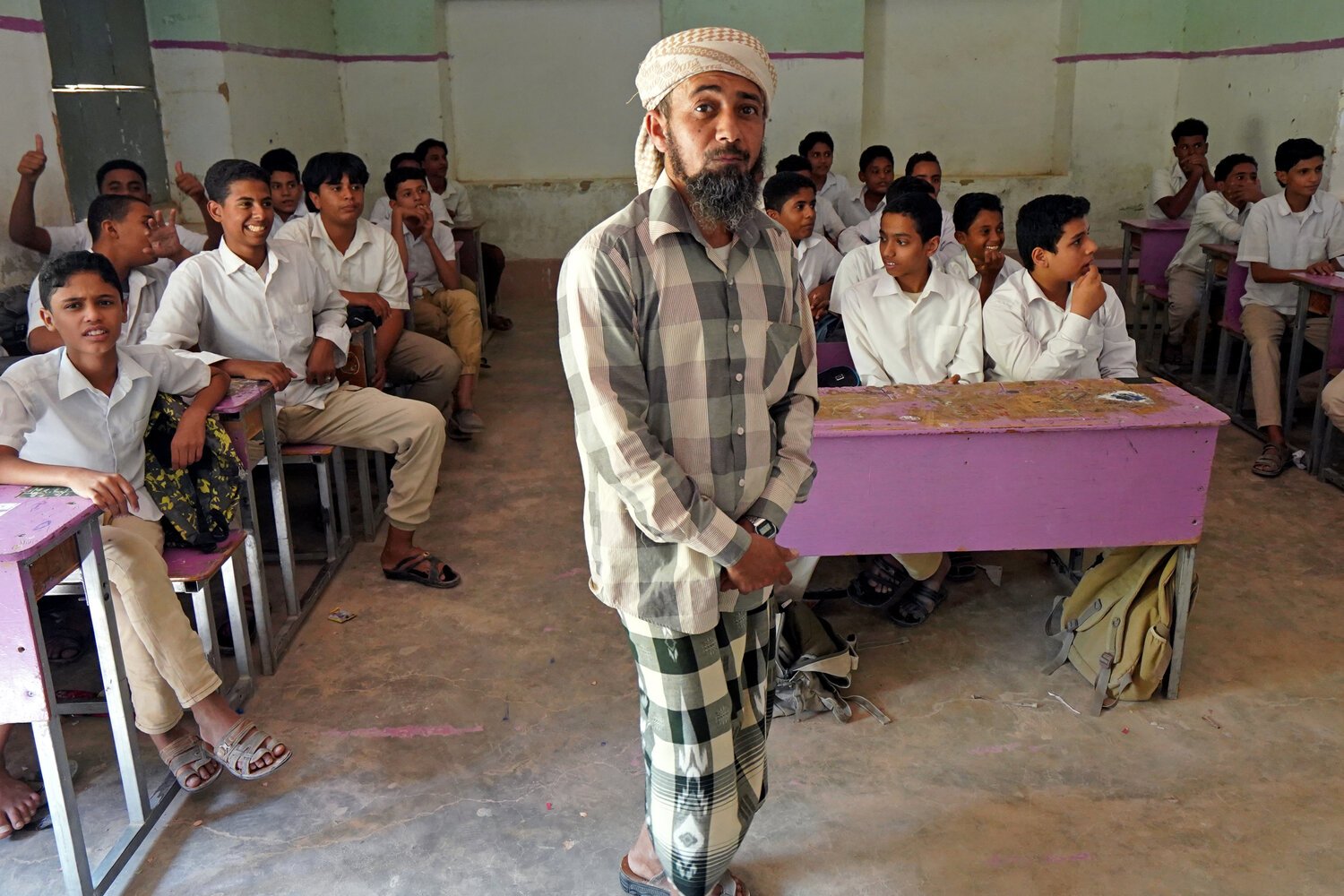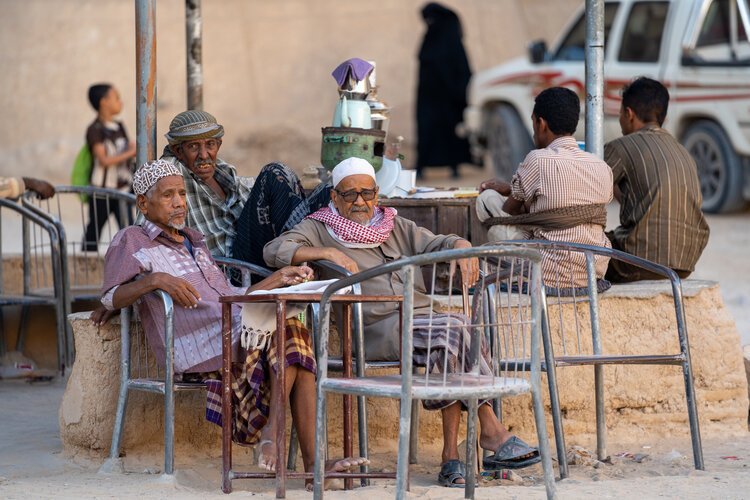A Photographic Journey Through Southern Yemen
In November 2019, I was fortunate to travel through southern Yemen as a coordinator for Inertia Network’s first program in the region with Kais al Qalisi. Our group was limited to just four people and we travelled by car from the Omani border across Al Mahrah into the Hadhramaut. Throughout the course of the five-days we spent in southern Yemen, we discussed local culture, history, the war, politics, and religion as we explored diminutive coastal villages, immensely beautiful mud-brick towns, fertile wadis and bustling cities with Kais.
We must have passed by 25 police and military checkpoints throughout the trip, as our visas and permission letters were checked at each spot. While the area is certainly not safe for independent travel, with an expert local team leader and driver, as well as contacts in each town, I felt safe and engaged throughout the entire trip. It was one of the most exciting, intellectually and emotionally stimulating adventures I’ve ever lead.
This photoseries is not meant to serve as some sort of political statement; rather, it’s meant to be a personal reflection of my journey through this unique, volatile, immensely beautiful corner of Arabia. This is my way of sharing my experiences with others— through photographic glimpses into daily life, landscapes and architecture accompanied by my own written explanations.
The photo above features the village of Haid Al-Jazil in Hadhramaut’s Wadi Doan, near Yemen’s geographic centre. The village sits perched on a massive rock on the bottom of the valley. This region is incredibly unique, as looking from above you can truly appreciate the geology of the area— a vast desolate desert plateau with thinly cut canyons carved hundreds of metres into the earth by ancient rivers. Small villages made from mud-bricks speckle the sides of these valley floor, as water and fertile grazing land lie at the middle of the valley where a river once flowed.
The photos above depict scenes of daily life from the inside the town of Shibam in Hadhramaur, central Yemen. While originally founded as a settlement some 1,700 years ago, the “modern” town of Shibam dates back to the 16th century. 7,000 people still make this ancient town of mud-brick skyscrapers their home, and the buildings can rise as high as 11 stories.
Women in the valleys around Seiyun in central Yemen’s Hadhramaut Governorate wear very distinct conical hats as sun protection while farming or engaging in animal husbandry. These hats are made from straw and are sold in the souqs around the region. As the women still wear full black abayas with niqabs and even black gloves while outside in the heat, the hats help keep the sun off the black cloth, thus keeping them cooler while outside. In this photo you can see two women bringing their goats back to the village of Al Hawi from their grazing lands just before sunset.
I’ll never forget the last night of this journey, sitting perched on a rock overlooking the ancient town of Shibam (pictured above) watching the sunset as the call to prayer echoed throughout the entire valley. While Kais was hurrying us to get us out of the town before nightfall, we spent a mesmerizing ten more minutes sitting in silence just listening to the chanting below.
Local boys were playing soccer on a large dusty field just outside of the walled city. Some people were returning home from a days work, crossing the dusty field to walk the narrow streets to their houses. Others were on their way to the mosque. There was a chaotic, yet tranquil flow to the moment that felt truly special. This experience was the perfect conclusion to my week in southern Yemen— mystical, and packed full of heritage and spirituality.
The town of walled Shibam itself is an incredible living piece of human innovation, culture and heritage, so much so that it’s a UNESCO world heritage site. It’s been called the “Manhattan of the Desert” because the town is made up of densely constructed mud-brick high-rises.
The population of the town is about 7,000 people in addition to hundreds of goats and chickens. The first floor of many of the residential buildings are kept for the animals. While the town has suffered damage due to floods and the Civil War, it remains by and large in tact. The town is in a constant state of repair as it has been throughout its history; new mud must be applied to the buildings regularly to protect them. Some of the oldest high-rises today date back several hundred years.
In this photo, Kais and two local Hadhrami men examine the inside inscription on a 100-year-old door in Wadi Doan, Hadhramaut. This door happens to be in one of the mansions in Wadi Doan, as the local Hadhrami Yemeni population is knows for their success in overseas business. One of the region’s most famous names is that of the Bin Laden family. Mohammed Bin Laden was born and raised in a small village near Wadi Doan before moving to Saudi Arabia as a young adult. He would go on to marry some 20 plus different women and father dozens of children, including his most infamous son Osama, before perishing in a plane crash.
The architecture of the palaces and mansions of the Hadhramaut is unique and beautiful, and includes intricate wooden carvings and metalwork as well as pastel coloured paints, while maintaining the traditional construction methods using mud-brick and mud exteriors.
Hadhrami architecture is spectacular to look at, and it must have been even more incredible to design and construct. This gigantic house looks like a white castle perched above an arid wadi. It wraps around and even incorporates a jagged rocky peak on the valley floor. The buildings here are mostly constructed using traditional methods with mud-bricks, one of the materials readily available from the region. Ornate wooden windows and doors are then added and the whole structure is given a smooth coat of mud before being painted.
Narrow streets, intricate doorways, mud high-rise buildings, and lots of men go about their daily routines in the towns of the Hadhramaut in central Yemen. As I travelled around this spectacular region I was able to meet lots of people who took an immediate interest in me— being a foreigner wandering around a region that has not seen tourists for quite some time. There were looks of confusion and curiosity, as well as warm greetings when I addressed them in Arabic.
Being able to explore these remarkable towns, standing on centuries of history, culture and heritage was a real honour, and while I recognize the security situation remains fragile in the country, it is still possible to visit with careful planning with an experienced local team. It helps remind people in Yemen that they are not forgotten by outsiders and that foreigners with friendly intentions still exist and are ready to appreciate their culture and country.
Tourism also provides one of the best sources of direct cash injection into the local economy, sending money and resources directly to people.
Yemen has a long coast line, and the coastal regions of the south are incredibly diverse. Mahris, a South Arabian people who speak their own language, populate many of Yemen’s southeastern villages near the Omani border. There are also lots of people of East African and Somali decent living in the seaside towns of the south.
In the photos above, on the left you can see young men harvesting bait fish from a net dragged to the beach outside Hawf, and on the right you can see two men selling clothing at the souq in the town of Al Ghaidah in the evening. Al Ghaidah is the largest town in Yemen’s Al Mahrah region and is only a couple hour’s drive from the Omani border.
Photographing women is a challenge in Yemen. This photo happened to be quickly snapped using a 200mm zoom lens from across the street as I waited for a friend to purchase a fouta— Yemeni man skirt. One of the ladies looked back just as I hit the shutter button.
Ever since Yemen’s revolution in the early 1960s, Yemeni women adopted the black abayas and niqabs (face veils) from Saudi Arabia. Before then, they wore more colourful clothing, albeit still very conservative in public. Today in rural Yemen, the black abaya is everywhere, but women still like to shop for colourful clothing and jewellery. They wear these while at home and at private functions where outside men are forbidden from entering.
These three women were shopping for clothes with a male guardian at store in the town of Tarim in Hadhramaut, Yemen.
One afternoon in Seiyun, I asked Kais if it would be possible to visit a school. After a few calls, our local fixer Mohammed lead us to a local boys school in the city where his nephew was a student. Teachers came out to meet us while young students ran around the school yard looking on with curious eyes. We were lead into a classroom of 15 year olds and the teacher, pictured above, briefly introduced his class the the subjects they learn.
Next thing we knew, we were the teachers, leading an impromptu English class with the students. The experience was certainly unexpected, but a ton of fun. It was easy to identify the studious students from the class clowns and not knowing what else to do, I ended up trying to play a game where the students had to identify their classmates based on characteristics— as in: “Can you point at the student with the funniest jokes in the class?” or “Which student in the class gets the best marks?” It worked, but only once translated into Arabic.
The towns of Hadhramaut are full of life— but one noticeable element is that men are much more publicly visible than women. Old men sit around drinking tea and chatting, run stores and market stalls and do much of the visible labour in the region.
Women, however, are more of a rarity. They are present walking down streets and going into shops, but in most other areas of life, they don’t take much of a public role in the rural regions— one exception being the farming women of the valley who wear the conical witch-like hats (or sometimes baseball caps instead).
The mosque on the right in the town of Tarim was also an exception, as it had a male and female entrance and during prayer time I was able to see both men and women enter for prayers. This immaculate white mosque with a massive mud-brick minaret looked spectacular from the outside, but was not open to non-Muslims.
November is the peak season for harvesting one of Wadi Doan’s most famous and sought-after products— honey. In this photo, a local honey seller carefully weighs out the most luxurious variety of Doani honey— called Sedr honey— into a small container. This kind of honey costs around $85 a kilo and is a valuable gift to sheikhs, ministers, and wealthy people in the Gulf.
Local people believe honey from Wadi Doan is a natural viagra and grooms are advised to eat it before their wedding day. In some places, they grill goat meat until it is about half cooked and then submerge it in honey to soak; it’s then served to the well-off soon-to-be husbands.
In a beautiful moment I feel lucky to have captured with my camera, a grandfather brings his young grandson to the rooftop of their home in the town of Shibam to listen to the call to prayer at sunset. I watched from an adjacent rock as he lovingly carried his grandson around the rooftop as the muezzins chanted their prayer calls from nearby mosques. Never mind our armed guards for a second, this moment felt inexplicably peaceful.

